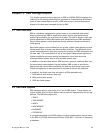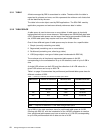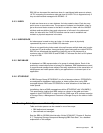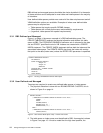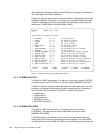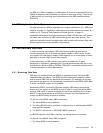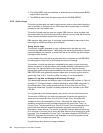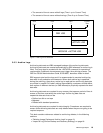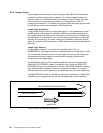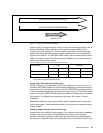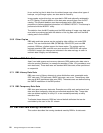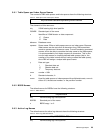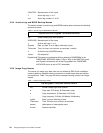
DB2 Storage Objects 17
log RBA (or LRSN) of updates to a table space. The record is opened when a first
update is detected, and closed after an interval of read only activity. The interval
is defined with two read-only switch parameters on the DB2 installation panel
DSNTIPN.
3.5 DB2 Application Table Spaces
All application data in DB2 is organized in the objects described in 3.2, “DB2 Data
Objects” on page 11. Application table spaces and index spaces are created as
shown in 3.3, “Creating Table Spaces and Index Spaces” on page 13.
Application table spaces and index spaces are VSAM LDS data sets, with exactly
the same data attributes as DB2 system table spaces and index spaces. The
distinction between system and application data is made only because they have
different performance and availability requirements.
3.6 DB2 Recovery Data Sets
In order to ensure data integrity, DB2 uses several traditional data sets for
recovery purposes. Not all of these are always needed by DB2, but all of them
are required for contingency reasons. DB2 supports two or more copies of these
data sets to ensure a high level of data integrity.
A short description of DB2 recovery data sets is provided here. A good
description is available in "Managing the Log and the Bootstrap Data Set" in the
Administration Guide of DB2 for OS/390, SC26-8957. An attempt has been made
to avoid redundancy in these descriptions.
3.6.1 Bootstrap Data Sets
DB2 uses the bootstrap data set (BSDS) to manage recovery and other DB2
subsystemwide information. The BSDS contains information needed to restart
and to recover DB2 from any abnormal circumstance. For example, all log data
sets (active and archive) are automatically recorded within the BSDS. While DB2
is active, the BSDS is open and is updated.
Because the BSDS is critical for DB2 data integrity, DB2 always requires the
presence of two copies of the BSDS at start up time. If a copy fails while DB2 is
running, DB2 sends a warning message and continues operating with a single
BSDS. It is the responsibility of operations to monitor this circumstance and
restore the BSDS duality as soon as possible.
To recover a lost BSDS, when DB2 is executing:
1. The failing BSDS must be deleted.
2. The failing BSDS must be redefined, or alternatively, an existing spare BSDS
copy must be renamed.
3. The BSDS is rebuilt with a -RECOVER BSDS command.
If a BSDS copy fails while DB2 is starting, the startup does not complete.
To recover a lost BSDS, when DB2 is stopped:
1. The failing BSDS must be deleted.





